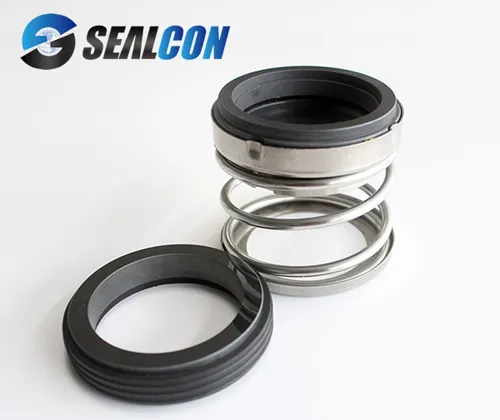CLOSE
Search
-
Knowledge of the Mechanical Seals
1. The basic concepts of mechanical seal: The mechanical seal is defined by a pair of end face mechanical seal perpendicular to the axis of rotation, and it use the fluid pressure and the elastic comp...view
-
 Elastomer Bellow Seals R91
Performance CapabilitiesTemperature:-20℃ to 150℃, dependent on the elastomerPressure:Up to 8 bar Speed:Up to 10 m/sEnd play/axial float allowance±0.1mmSizes 14mm to 90mmMaterials CombinationFace: C...view
Elastomer Bellow Seals R91
Performance CapabilitiesTemperature:-20℃ to 150℃, dependent on the elastomerPressure:Up to 8 bar Speed:Up to 10 m/sEnd play/axial float allowance±0.1mmSizes 14mm to 90mmMaterials CombinationFace: C...view -
 Elastomer Bellow Seals R92
Performance CapabilitiesTemperature:-20℃ to 150℃, dependent on the elastomerPressure:Up to 8 bar Speed: Up to 10 m/sEnd play/axial float allowance±0.1mmSizes 10mm to 75mmview
Elastomer Bellow Seals R92
Performance CapabilitiesTemperature:-20℃ to 150℃, dependent on the elastomerPressure:Up to 8 bar Speed: Up to 10 m/sEnd play/axial float allowance±0.1mmSizes 10mm to 75mmview -
 Elastomer Bellow Seals R93
Performance CapabilitiesTemperature:-20℃ to 150℃, dependent on the elastomerPressure:Up to 8 bar Speed:Up to 10 m/sEnd play/axial float allowance±0.1mmSizes 10mm to 100mmMaterials CombinationFace: ...view
Elastomer Bellow Seals R93
Performance CapabilitiesTemperature:-20℃ to 150℃, dependent on the elastomerPressure:Up to 8 bar Speed:Up to 10 m/sEnd play/axial float allowance±0.1mmSizes 10mm to 100mmMaterials CombinationFace: ...view -
The Basic Parts of Mechanical Seal
1. The five basic parts of mechanical seal: rotating ring, stationary ring, spring, auxiliary seal, other metal parts2. Mechanical seal materials: 1) Sealing surface materials: a. Graphite: including ...view
-
Defination and Device Types of Mechanical Seal
Seal is to prevent the leakage of fluid or solid particles from the adjacent joint surface and to prevent the external impurities such as dust or moisture invade the internal parts of the machine equi...view
 English
English français
français Deutsch
Deutsch Español
Español italiano
italiano русский
русский português
português العربية
العربية ไทย
ไทย čeština
čeština Polska
Polska


